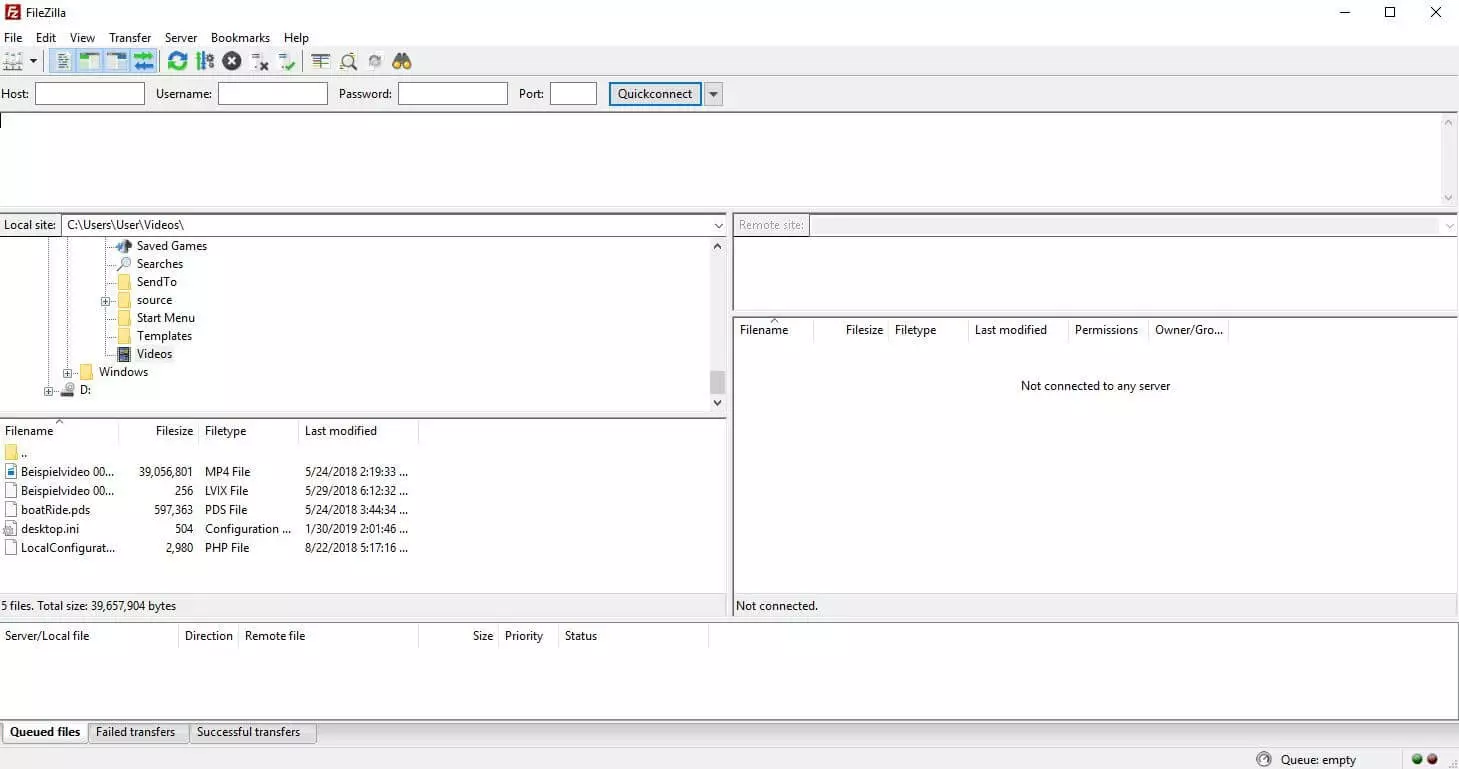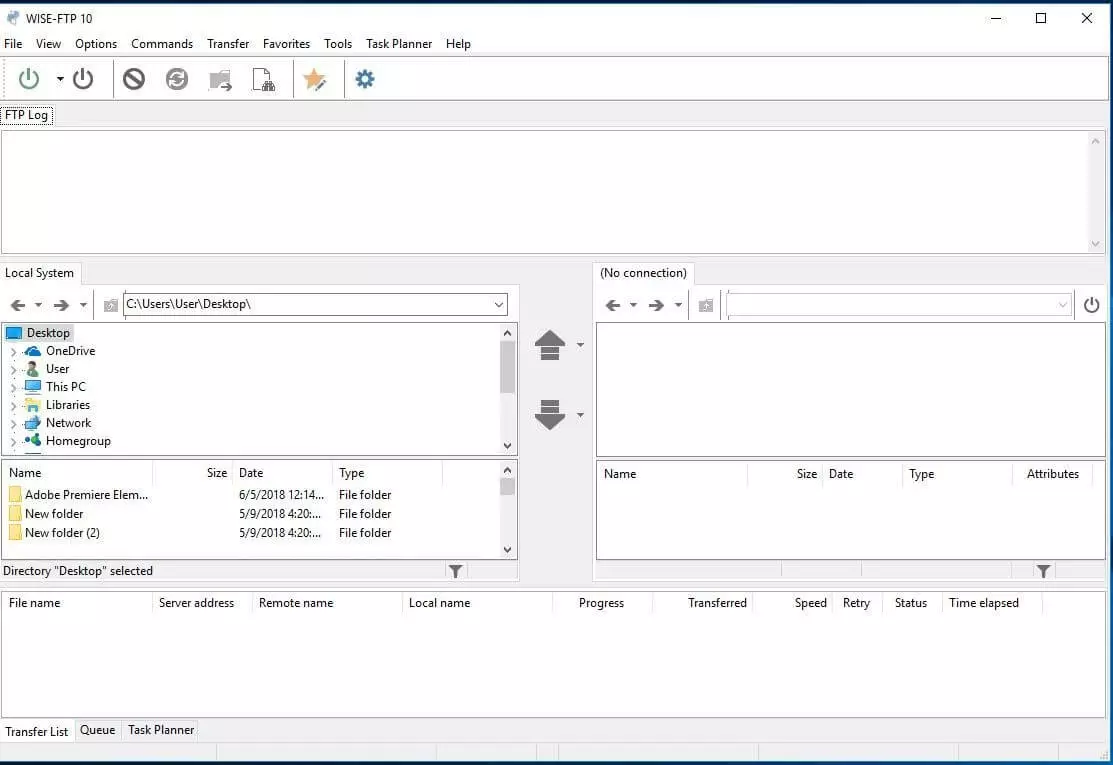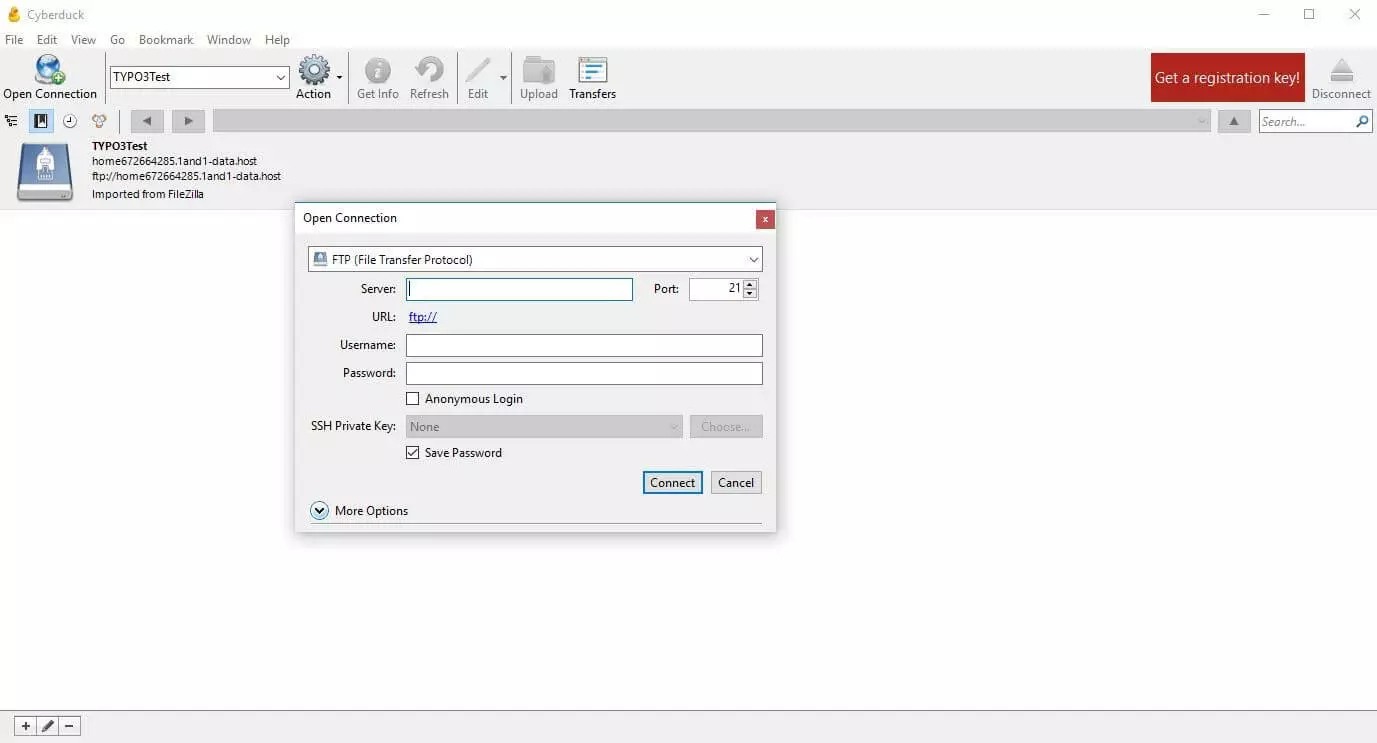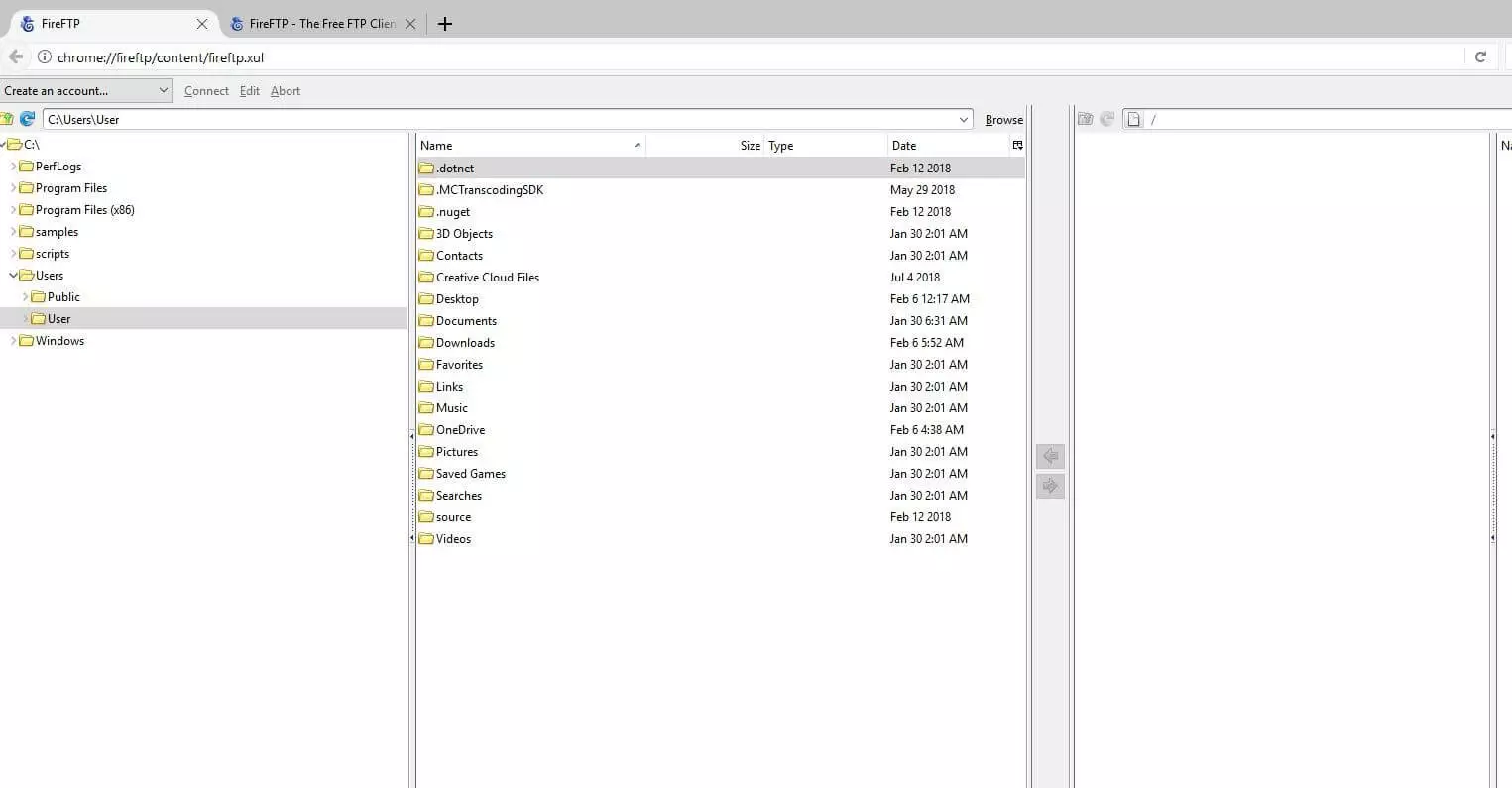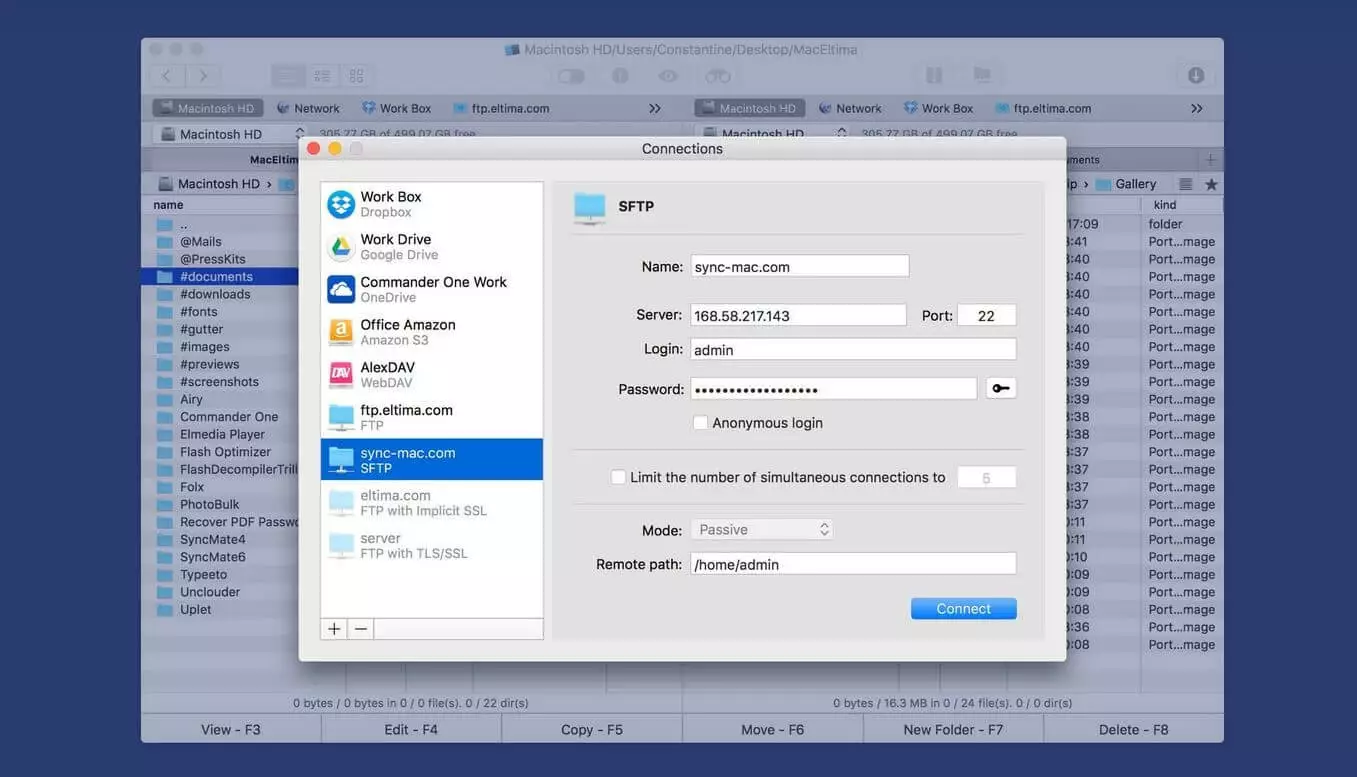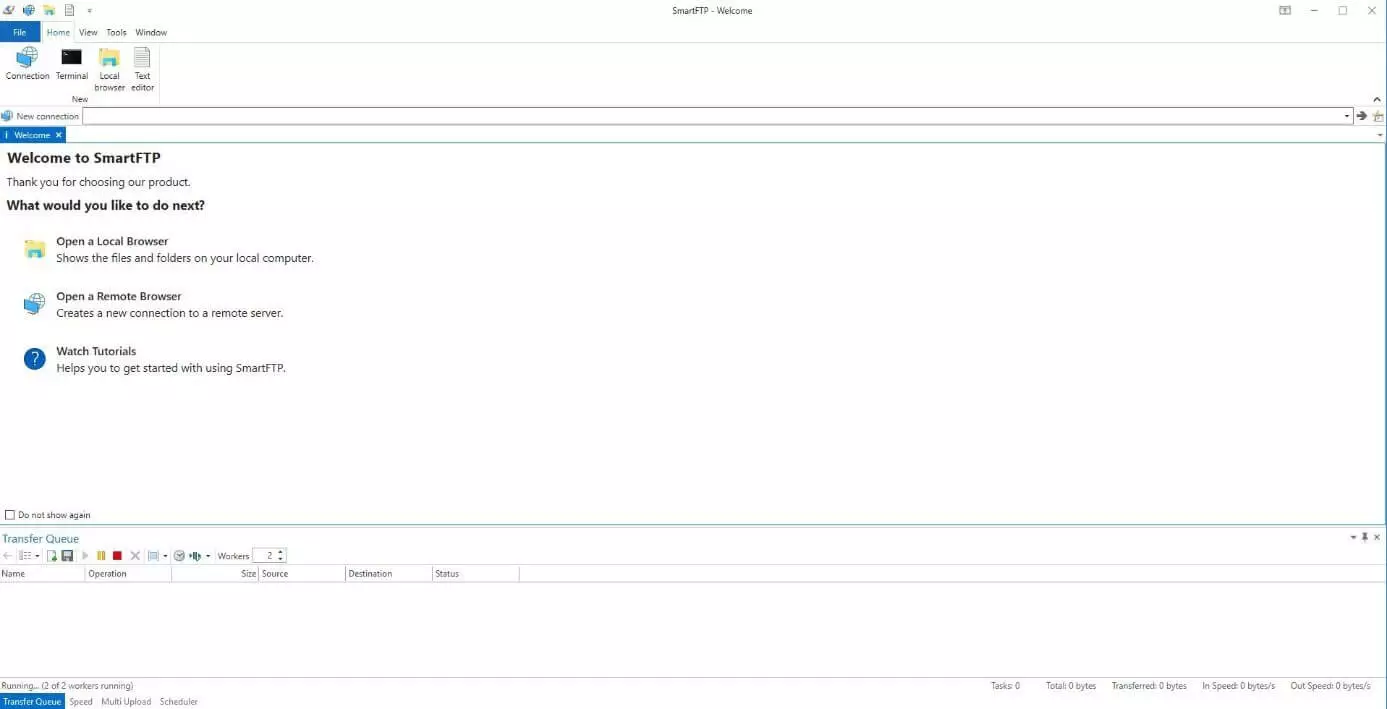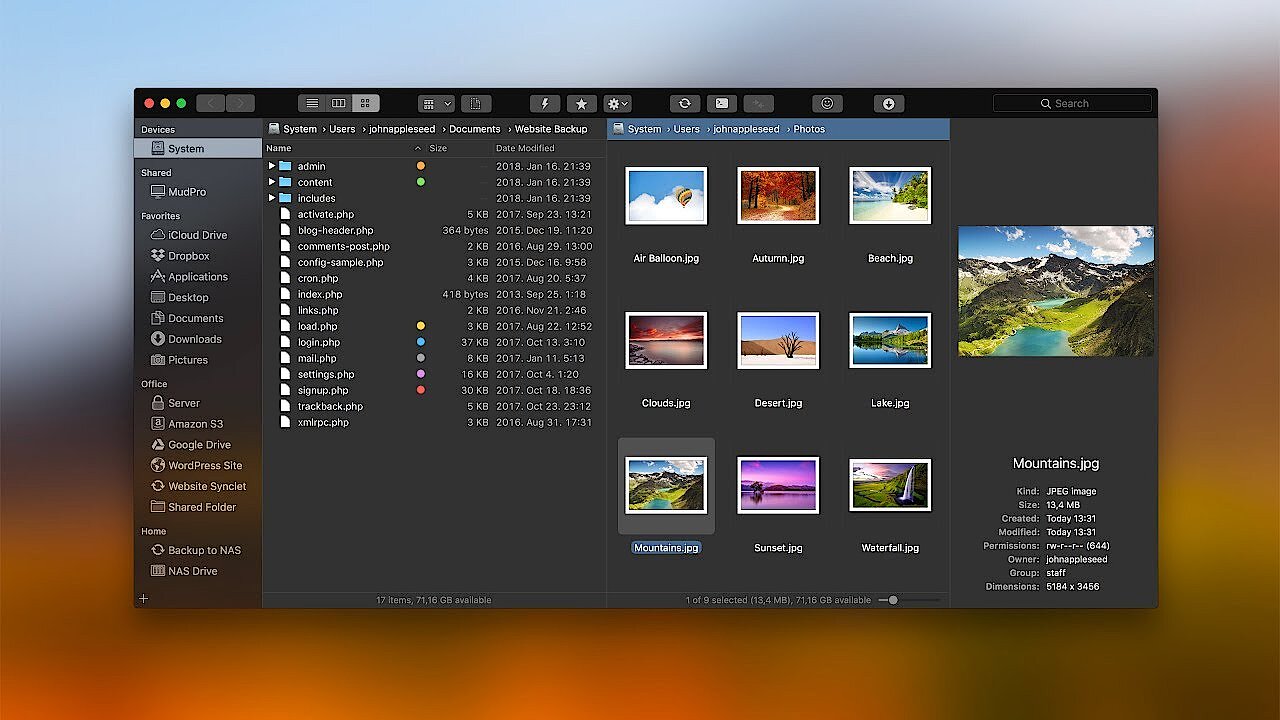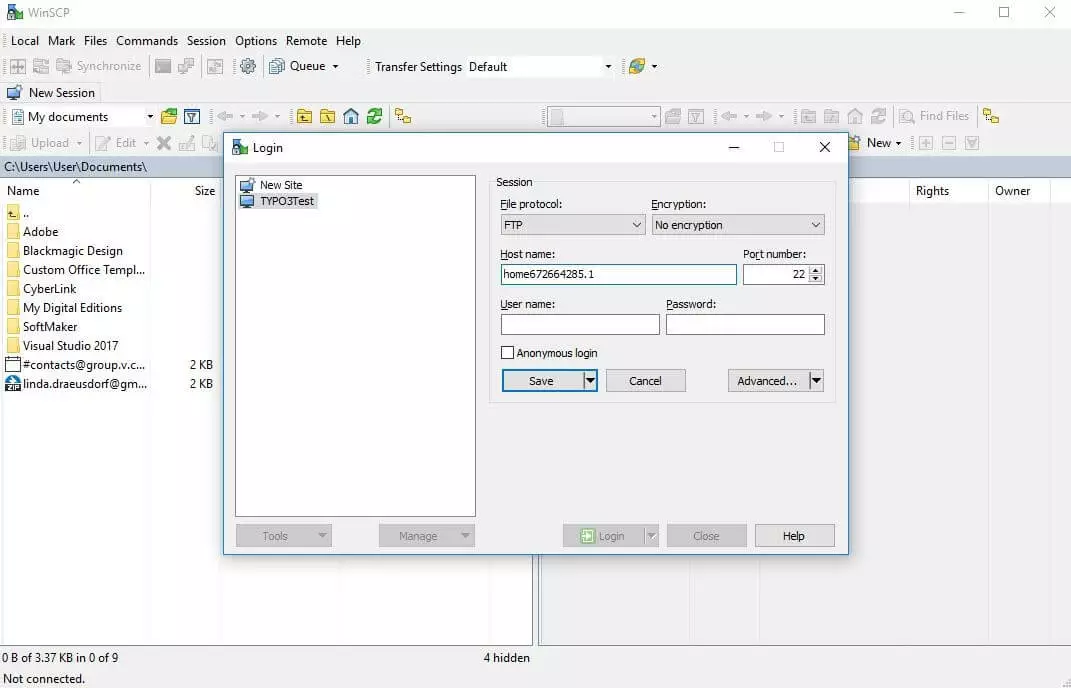9 excellent FTP programs / FTP clients for Windows & Mac
Users can upload, download, rename, or delete files on an FTP server using an FTP client. This kind of program establishes the TCP connection to the port of a server; this allows data exchange to be controlled with the help of commands. Many internet browsers have an integrated client, but dedicated FTP programs for Windows, macOS, and other operating systems make transferring data with FTP a more manageable task.
How file transfer works with the file transfer protocol
In order to reach an FTP server, a connection through an FTP client first needs to be established. This FTP client creates a TCP connection to the control port of the server (normally port 21) and is then able to send commands that the server subsequently answers. Following this, the data is transferred through another port. At this point, it’s important to differentiate between two different types of transfer modes. In active mode, the client, which uses port 1023, signals its IP address through port 21 during connection buildup. This process informs the server which port the client can be reached on. In passive mode, the server does not receive an IP address from the client (due to a firewall, for example) and offers the client a port through which a connection can be established.
Those using web-hosting solutions with FTP accounts profit from the quick and easy data transmission between the device and the web server. FTP software further assists these solutions by providing a sleek user interface that browser-based clients lack. FTP programs let the user sort and manage files into the existing directory structure with speed and ease. Administrators control the access rights of users who are able to simultaneously access the FTP server.
Do you want to save or transfer data? Then rent a secure FTP hosting from IONOS. Secure transfers via SSH and SSL/TLS, as well as daily back-ups are included.
An overview of 9 FTP programs
There are many FTP programs currently available on the market. Their use as well as many of their functions can also vary quite strongly from one another. Some are free, while others are fee based. Their operating systems differ as well: Windows,macOS, or Linux are all available.
| Release year | Developer | Platform | Price | |
| Commander One | 2015 | Eltima Software | macOS | 29,99 $ |
| Cyberduck | 2002 | Iterate | Windows, macOS | free |
| FileZilla | 2001 | Tim Kosse | Windows, macOS, Linux | free |
| FireFTP | 2004 | Mime Čuvalo | Mutli-platform | free |
| ForkLift | 2007 | BinaryNights | macOS | 29,95 $ |
| SmartFTP | 2001 | SmartSoft Ltd. | Windows | from 39,99 $ / year |
| Transmit | 1998 | Panic | macOS | 45 $ |
| WinSCP | 2000 | Martin Přikryl | Windows | free |
| WISE-FTP | 1998 | AceBIT | Windows | 40 $ approx |
FileZilla
It is not without reason that FileZilla is the most popular FTP application on the market. The open source software is free of charge and available for Windows 7 and beyond, Linux, and macOS. As soon as a connection is established, data is then ready to be easily exchanged between client and server via a drag-and-drop feature. FileZilla also supports large data transfers (over 4 GB) and is also able to resume terminated file transfers. Users can set up upload and download speeds themselves and the server manager function allows the used FTP server, including access information, to be saved. With FileZilla, users have the option of encrypting the FTP via SSL/TLS or SSH. FileZilla at a glance:
- compatible with Windows, Linux, and macOS
- supports SSL and SSH encryption
- configurable transfer speeds
- enables connection to FTP proxy servers
- Keepalive system for network connection maintenanc
| Advantages | Disadvantages |
| Multi-platform compatibility | Log-in data stored in plain text |
| Supports the transfer of large files (up to 4 GB) |
WISE-FTP
WISE-FTP is a paid FTP program for Windows operating systems (XP or higher), which can be tested free of charge for 30 days before purchase without any restrictions. The software supports all common protocols like FTP, SFTP, FTPS or FTPES and thus allows the connection to any FTP server. Thanks to the integrated task planner, the upload and download of files can be completely automated with WISE-FTP: Users only have to define the target server and when and how often a certain task should be executed. Both authentication and file transfer are subject to maximum security thanks to the SFTP or FTPS protocol. In addition, the data can be encrypted via Rijndael, BlowFish or TripleDES. The features of the FTP client at a glance:
- Compatible with Windows
- Data encryption possible (Rijndael, BlowFish, TripleDES)
- Integrated task planner
- Powerful FTP synchronization
- User-defined, storable key combinations
- Adjustable upload and download speed
| Advantages | Disadvantages |
| Integrated task planner | A successor license must be purchased for new versions |
| Various encryption algorithms available |
Transmit
Although it requires payment, Transmit is a top-of-the-line option for macOS and iOS devices. The engine provides swift data transfer and lets the user set up a bandwidth limit should the need arise. The mac interface delivers on more than mere looks: it is also highly functional. The synchronization functions gives users the ability to easily align entire directories between the server and client. Transit supports encrypted transfer through SSL/TSL, SSH, and online storage services like Amazon S3 or WebDAV. Users can detect their respective servers by using either Quick Connect or by saving them as favorites. Below is a summary.
- compatible with both macOS
- supports SSL and SSH encryption
- enables connection to FTP, SFTP, WebDAV and Amazon S3
- controllable upload and download limits
- server to server data transfer via FXP
- multiple active connections possible
| Advantages | Disadvantages |
| Two-factor authentication | No need to ask when deleting files |
| Interfaces to various cloud storage services |
Cyberduck
Cyberduck is a free FTP program that supports all Windows operating systems from Windows 7 onward and macOS starting with version 10.7. The program enables an uncomplicated connection to all FTO, SFTP, or WebDAV servers and cloud services, such as Amazon S3, Azure, or OpenStack. The user interface’s neatly arranged set-up and intuitive use makes adding new servers a task that can be completed quickly. Limiting the number of data transfers that are able to simultaneously occur is a further option, and resuming terminated transfers with the software is another feature at the user’s disposal. Bookmarks are easily organized with the Cyberduck’s drag and drop feature, which can be imported from other programs. Here are the facts of the freeware FTP client:
- compatible with Windows and macOS
- supports SSL and SSH encryption
- enables connection to FTP, SFTP, WebDAV, Azure, OpenStack, Amazon S3 and more
- number of simultaneous transfers can be regulated
- archiving and expanding tar/zip files through SSH
- supports password manager in Apple’s Keychain
- segmented uploads for files over 5 GB
| Advantages | Disadvantages |
| Easy to use, clear to interface | Occasional disconnections |
| Client-side encryption by Cryptomator |
FireFTP
The FTP program FireFTP is a special feature on this list. Unlike other FTP clients, FireFTP is not a stand-alone application, but a browser extension. Originally it was developed by Firefox – and 26 million downloads are a clear indication of the small program’s success. In 2017, however, the client was removed from the add-on arsenal of the open source browser, which is why it can now only be used with the Firefox offshoot Waterfox. Once installed, the FTP client extension allows SSL/TLS secured FTP connections to be established, limiting the number of simultaneous data transfers as well as upload and download speeds. The functions of the browser add-on at a glance:
- Cross-platform usability
- Supports SSL/TLS encryption
- Directory synchronization
- Adjustable download and upload speed
- Integrity checks (XMD5, XSHA1)
- Automatic resumption of broken connections and transfers
| Advantages | Disadvantages |
| Cross-platform usability | Only available for the browser Waterfox |
| Open Source | Cumbersome installation |
Commander One Pro
The Mac file manager Commander One can also be used as an FTP client after upgrading to the paid Pro edition. In addition to the FTP, FTPS and SFTP protocols, the software also supports data exchange through WebDAV and with the online storage solutions Dropbox, OneDrive, Google Drive and Amazon S3. In order to ensure the fastest and most efficient upload and download processes possible, Commander One allows the simultaneous transfer of multiple files, while a queue function prevents bandwidth bottlenecks. Optionally, when connecting to the FTP server, users can also set a limit for concurrent connections. The most important features of the FTP program for macOS in the summary:
- Compatible with macOS
- Enables connections with FTP, FTPS, SFTP, WebDAV, Google Drive, OneDrive and Amazon S3
- Integrated process manager
- Has its own terminal emulator
- Different themes available
- Stores all server settings and login information automatically in the macOS keychain
| Advantages | Disadvantages |
| Stores server data automatically in the macOS keychain | No function for synchronizing directories |
| Equipped with its own terminal |
SmartFTP
The shareware SmartFTP, which also comes in a thirty-day trial version, supports all Windows operating systems starting with XP. It also supports FTP, FTPS, and SFTP as well as services like WebDAV, Amazon S3, Google Drive and Microsoft OneDrive. Additionally, the program can connect to multiple servers, hence allowing data to be moved from server to server via FXP. The integrated search function is an especially practical advantage for larger FTP servers. After the trial run is over, users have the possibility of choosing between Professional, Ultimate and Enterprise editions, which exhibit some variation in their corresponding range of functions. The Enterprise edition of SmartFTP includes the following features:
- compatible with Windows
- supports SSL and SSH encryption
- enables connection to FTP, SFTP, WebDAV, Google Drive, Microsoft OneDrive, and Amazon S3
- scheduled transfers
- resumes terminated transfers
- simultaneous connection to multiple servers
| Advantages | Disadvantages |
| Resumes canceled data transfers | Relatively expensive |
| Integrated remote browser |
ForkLift
The FTP program ForkLift has been one of the most feature-rich solutions for Mac computers for years. The paid software not only supports various protocols like FTP, SFTP, SMB, AFP and NFS, but also offers interfaces to online services like Amazon S3, Google Drive or Backblaze B2. Users have the ability to connect to multiple server simultaneously and move files between them conveniently through drag-and-drop. With a single click, you can also synchronize entire directories (in one or both directions), allowing you to transfer changes to local files to the FTP server at lightning speed – and rename files in batches. The FTP client’s feature set in the summary:
- Compatible with macOS
- Allows connections to FTP, SFTP, SMB, Google Drive and Amazon S3
- Password protection for server information
- Simple file organization using tags
- Directory synchronization
Preview (images, PDF, text) or playback function (video, audio files)
| Advantages | Disadvantages |
| Password protection for server files | Upgrade to newer versions is subject to a fee |
| Practical preview/playback function |
WinSCP
WinSCP is an open source program for Windows starting with XP. In addition to FTP and SFTP, WinSCP also supports the encrypted file transfer protocol SCP, which is based on SSH. A connection via SSH adds the benefit of encrypting the data exchange as well as the log-in data. In addition to deleting, copying, and moving files, WinSCP can also synchronize directories. Users can choose from two different interfaces based on their tastes: the Explorer interface borrows from Windows' folder layout, while the Norton Commander interface is modelled after its namesake file manager. Frequently used connections can be saved as favorites with WinSCP. An overview of the facts:
- compatible with Windows
- supports SSL, and SSH encryption
- enables connection via FTP, SFTP, and SCP
- directory synchronization in semi or fully automatic modes
- integrated text editor
- optional portable version enables use without installation
| Advantages | Disadvantages |
| Open Source | Problems transferring large files |
| Optional Commander or Explorer interface |


